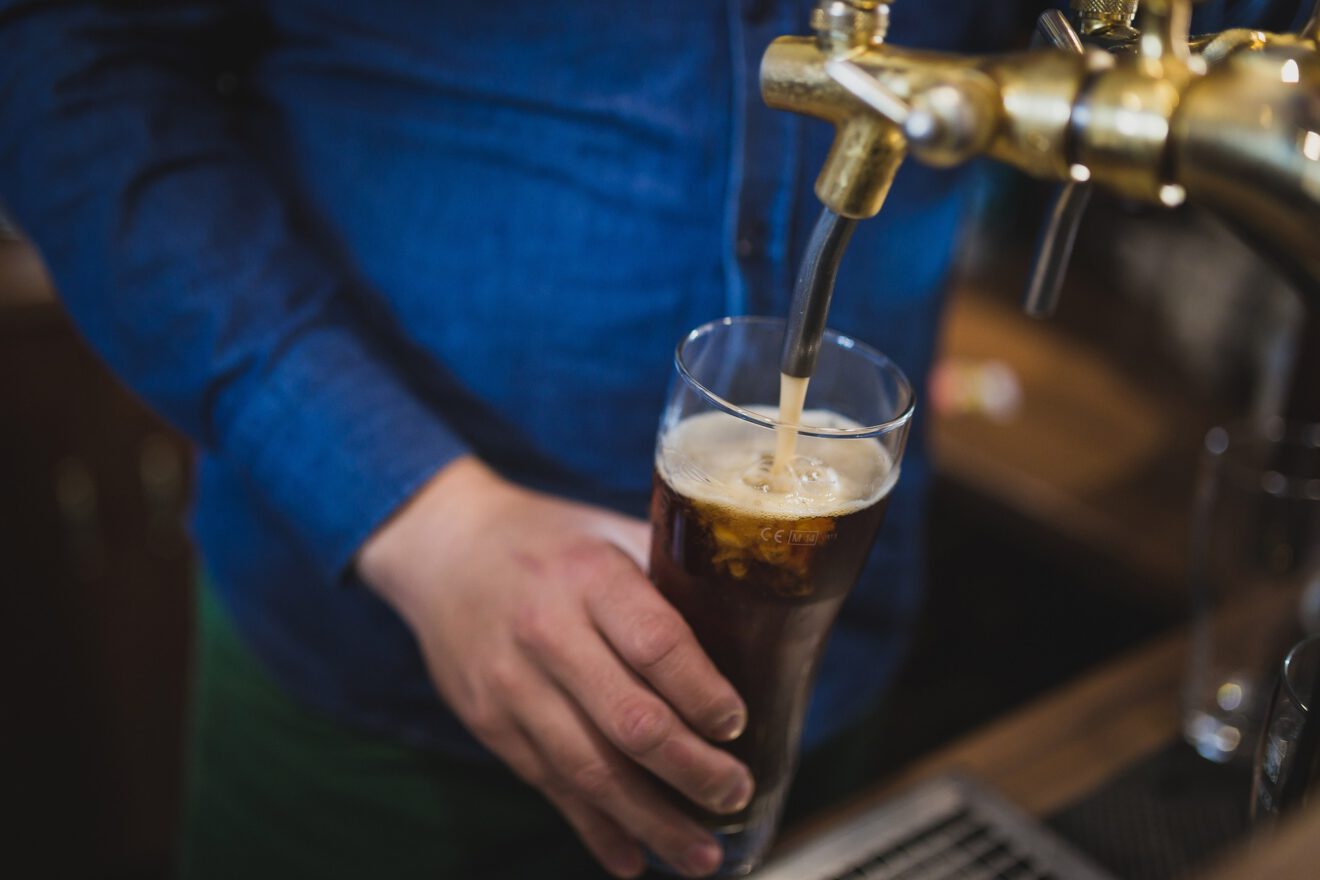Bars, restaurants and other foodservice operators are taking advantage of new tech tools that make it easier to serve beer and keep track of beer sales. Offering a wider range of brews can help attract beer enthusiasts, while self-serve setups can cut down on wait times and free up staff to focus on customer service. Keeping track of beer sales also has benefits for both customers and operators alike — allowing diners to recall a brand they enjoyed, and enabling restaurants to minimize loss and predict restocking needs.
New tools let customers get hands-on
One of the biggest technology-enabled changes in draft beer sales is the rise of self-serve options. Systems that allow customers to pour their own beer are popping up at restaurants, bars and sports arenas.
Capital One Arena in Washington, D.C., uses a system from Georgia-based DraftServ to let patrons pour their own beers once they have purchased a cup with a QR code that they scan at the tap, Food & Wine reported. DraftServ also supplies systems to casinos, hotels and restaurants, and has options that work with RFID cards and barcodes in addition to QR codes.
RFID is the technology of choice for most self-serve beer technology providers, including iPourIt and Table Tap, which makes the Tabletender and Walltender systems. Restaurant staffers check a customer’s ID and put a credit card on file before presenting them with an RFID card or wristband. Scanning the RFID item at the tap allows customers to pour their own beers in any amount they wish — as little as a taste or as much as a full glass — until they reach an ounce limit that can be programmed by the operator.
Signage above the taps provides information about each beer, such as the brewer name, description, ABV and IBU. The ability to learn about each beer on offer and pour a small sample before commiting to a full glass is sure to appeal to beer-loving consumers, while the insight into what customers are drinking provides benefits to operators. Pacific PourHouse in Union City, Calif., plans to tailor its beverage offerings based on insights from its iPourIt beer wall, according to a report in RFID Journal.
Data offers valuable insights to operators
In addition to the self-serve systems on the market, there are also solutions designed for use behind the bar that can help operators minimize loss and maximize efficiency. New York-based Beer Board offers tools designed to help bars and restaurants display the beers they have available and track every ounce that’s poured.
Tracking what flows through every draft line can help solve the common problems of beers being poured but never logged into the POS system. When Buffalo Wild Wings franchisee Buckeye Restaurant Concepts started using the BeerBoard system at a Colorado location, the manager discovered several instances of servers pouring beers without ringing them in, including one server who was giving away free beers to an off-duty employee, according to a BeerBoard case study.
Monitoring the popularity of each beer offering can help operators predict when they’ll need to restock, or how often to clean the tap lines. Empire Brewing Company in Syracuse, N.Y., uses the system to manage inventory and the brewing schedule at its on-site brewery.
Whether operators are using these new systems to manage inventory or speed service by putting the tap handle in customers’ hands, it’s clear that new technology is shaping the future of beer.
__________________________________________________________________________________________________________________
If you enjoyed this article, sign up for Restaurant Smartbrief to get news like this in your inbox, or check out all of SmartBrief’s food and travel newsletters as we offer more than 30 newsletters covering the food and travel industries from restaurants, food retail and food manufacturing to business travel, the airline and hotel industries and gaming.
